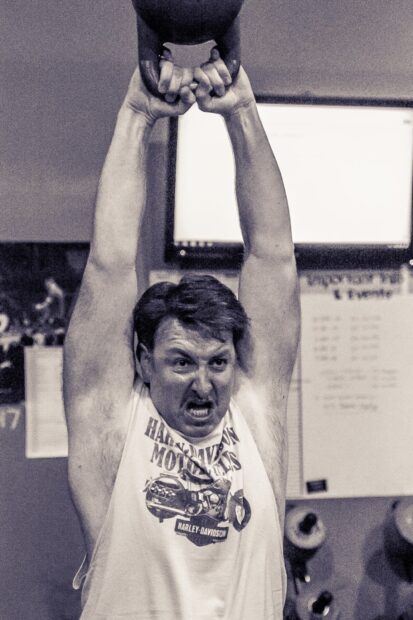Wing Chun for Fitness: Developing Strength, Endurance, and Amazing Agility
By Maurice Novoa a master under the Yuen Kay Shan, Ip Man and Pan Nam lineages.
Introduction:
In the world of martial arts, Wing Chun is renowned for its practical self-defense techniques and efficiency of movement. However, it is not just about combat skills—it also offers a fantastic way to improve your fitness level. In this article, we will explore how practicing Wing Chun can help you develop strength, endurance, and agility while enjoying a dynamic and engaging training experience.
The Physical Demands of Wing Chun
Wing Chun training involves various physical elements that contribute to overall fitness. These include:
Developing Strength and Power
One of the key benefits of Wing Chun training is the development of functional strength. The techniques and drills require the engagement of multiple muscle groups, especially in the arms, shoulders, and core. Through repetitive practice, these muscles become stronger and more resilient.
Practicing Forms: Wing Chun forms, such as Siu Nim Tao, Chum Kiu, and Biu Jee, involve performing a series of movements with precise body alignment and controlled power. Executing these forms repeatedly not only refines technique but also builds strength throughout the body. The deliberate and controlled movements require engaging the muscles and maintaining tension, leading to increased muscular endurance and overall strength.
Chi Sao: Chi Sao, or sticky hands, is a unique training exercise in Wing Chun that improves strength and sensitivity. During Chi Sao practice, practitioners engage in close-range hand movements, developing strength in the arms, wrists, and fingers. The constant pressure and resistance encountered in Chi Sao further enhance strength and power. By continuously challenging the muscles through controlled pushing and pulling movements, practitioners develop functional strength that translates into real-life situations.
Boosting Endurance and Stamina
Wing Chun training requires sustained effort and a high level of endurance. Continuous practice and drills build stamina over time, allowing practitioners to perform techniques with efficiency and effectiveness even during extended training sessions or real-life situations.
Punching and Kicking Drills: The repetition of punches, strikes, and kicks in Wing Chun drills helps build muscular endurance and cardiovascular fitness. By incorporating dynamic combinations and increasing the speed and intensity of the drills, practitioners push their limits and improve their overall endurance and stamina. The constant engagement of the muscles, coupled with controlled breathing, strengthens the cardiovascular system and enhances overall fitness.
Sparring: Engaging in controlled sparring sessions challenges both physical and mental endurance. The fast-paced exchanges and constant movement in Wing Chun sparring develop cardiovascular fitness, agility, and the ability to maintain focus and technique under pressure. By simulating real-life scenarios and varying the intensity of the sparring sessions, practitioners build endurance and adaptability, ensuring they are prepared to defend themselves effectively in any situation.
Enhancing Agility and Flexibility
Wing Chun training emphasizes agility and quick reflexes, promoting enhanced coordination and flexibility.
Footwork and Body Movement: Wing Chun footwork drills, such as pivoting, stepping, and shifting, enhance agility and coordination. These movements require precise weight distribution and body positioning, leading to improved balance and flexibility. By practicing footwork drills regularly, Wing Chun practitioners develop a strong foundation of agility, allowing them to move quickly and effectively in various directions during combat or self-defense situations.
Trapping and Sensitivity Drills: Trapping and sensitivity drills in Wing Chun involve intricate hand movements and rapid responses. Regular practice of these drills enhances reflexes, hand-eye coordination, and overall agility. By training the body to react instinctively and efficiently to incoming attacks, practitioners develop heightened agility, enabling them to effectively defend and counter in real-life encounters.
Forms Practice: Wing Chun forms incorporate flowing movements and transitions, requiring practitioners to move with grace and fluidity. Performing forms regularly improves overall body control and flexibility. The controlled and deliberate execution of each movement stretches and strengthens the muscles, promoting increased range of motion and flexibility. Additionally, the continuous repetition of forms enhances coordination and body awareness, allowing practitioners to move seamlessly between techniques and adapt to changing circumstances.
Conclusion:
Wing Chun not only provides effective self-defense techniques but also offers a comprehensive fitness experience. Through its focus on strength, endurance, and agility, the training can help you achieve your fitness goals while developing valuable martial arts skills. By consistently practicing these techniques, forms, and drills, you can improve your overall strength, build endurance, and enhance your agility and flexibility.
Embrace the art of Wing Chun, train with dedication, and enjoy the physical benefits it brings to your fitness journey. Start your Wing Chun training today and discover a path to improved strength, endurance, and agility like never before!

